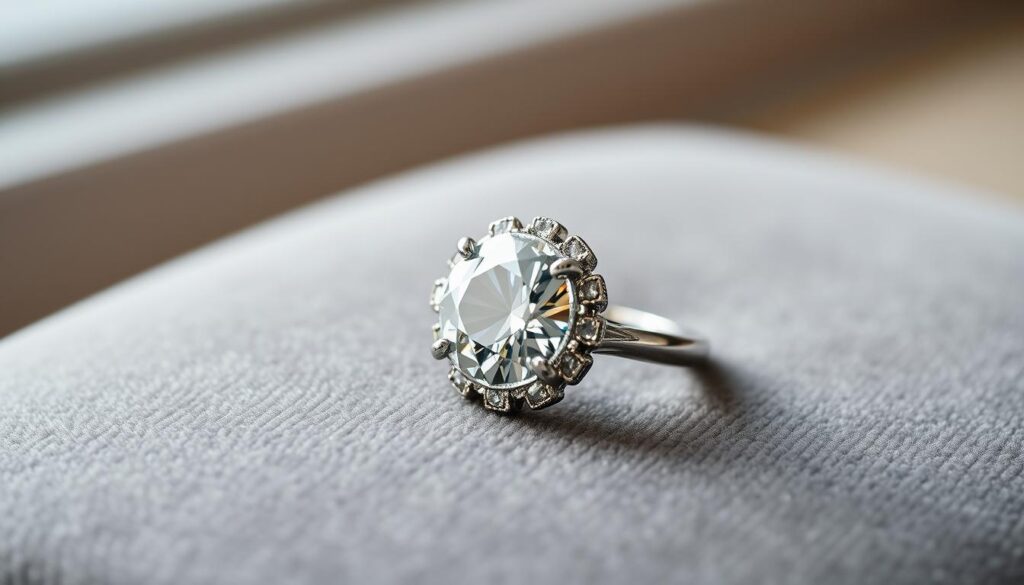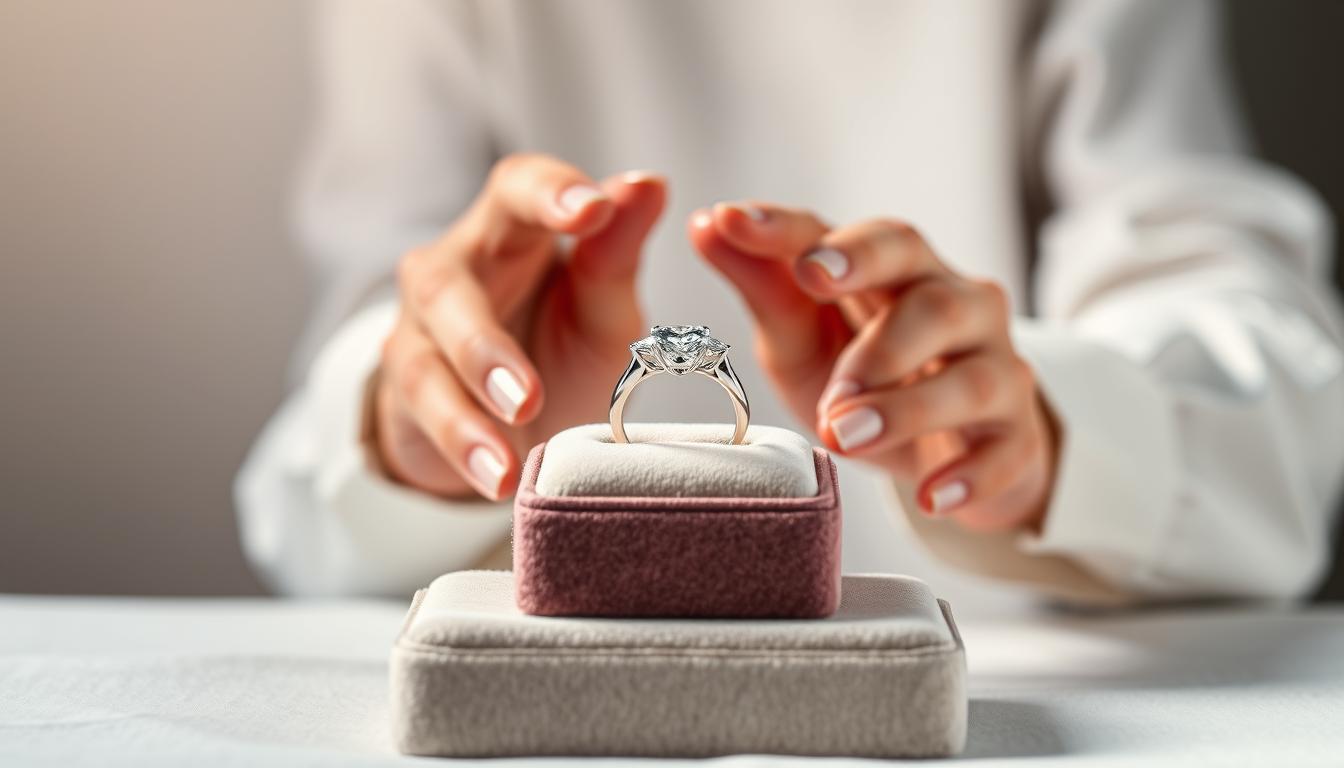Life’s unexpected turns often leave us holding symbols of chapters that have closed. Whether it’s a shift in relationships, financial priorities, or simply wanting to reinvest in new dreams, parting with a precious item can feel deeply personal. You’re not alone—nearly 40% of Millennials have considered this step to fund education or homeownership, according to recent studies.
What many don’t realize is that these sentimental pieces hold tangible worth. With proper guidance, transforming them into financial resources becomes not just possible, but empowering. This isn’t about loss—it’s about strategic reinvention.
Our roadmap simplifies every phase, from uncovering your item’s true market value to selecting trustworthy buyers. We’ll help you avoid rushed decisions while highlighting lesser-known strategies to boost returns. Knowledge transforms uncertainty into confidence, whether you’re navigating online platforms or local jewelers.
By the end of this guide, you’ll possess clear steps to protect both your emotional well-being and financial interests. Let’s begin this journey toward resolution and renewal—one informed choice at a time.
Understanding the Resale Value of Your Engagement Ring
Knowing your item’s worth starts with understanding what buyers truly value. While sentimental meaning fades in resale markets, tangible qualities like craftsmanship and materials take center stage. Let’s break down the essentials.
Factors That Influence Value
Diamond quality drives pricing. The four Cs—cut, color, clarity, and carat weight—determine up to 70% of a stone’s worth. A well-cut diamond with minimal imperfections often commands better offers. Metal type matters too: platinum settings typically outvalue gold.
Brand reputation creates surprising differences. Designer pieces from names like Tiffany & Co. may fetch 15-30% more than unbranded equivalents. Condition is key—chips or loose prongs lower value. Keep original paperwork; certificates from GIA or AGS boost buyer confidence.
Appraisal and Certification Tips
Insurance documents often list inflated values. “An appraisal for replacement isn’t the same as market price,” explains gemologist Mara Santos. Get updated evaluations from certified experts, focusing on current gold and diamond rates.
Timing affects outcomes. Pre-holiday seasons see higher demand for jewelry. Compare multiple offers, and consider holding if metal prices rise. Knowledge turns uncertainty into strategic decisions.
Step-by-Step Process for selling engagement ring
Turning sentimental jewelry into financial opportunity requires a clear roadmap. Let’s break it down into phases that balance efficiency with informed decision-making.
Determining Your Ring’s True Worth
Start by gathering every document related to your piece. Original receipts, grading reports, and repair records help establish authenticity. Note specific details like diamond measurements and metal purity stamps—these details matter more than you might think.
High-quality photos make a difference. Capture shots in natural light, focusing on hallmarks and stone brilliance. “Overhead lighting creates glare,” advises professional photographer Lena Torres. Showcase unique design elements that set your piece apart.
Navigating the Selling Process with Ease
Most reputable buyers follow this streamlined approach:
- Submit detailed specifications through online forms
- Review preliminary quotes within 24 hours
- Ship items via insured carriers with tracking
- Finalize payment after physical verification
Companies like Worthy.com report that complete initial information reduces price adjustments by 65%. Always compare multiple offers—this isn’t about speed, but smart choices.
Secure packaging prevents transit issues. Use padded envelopes with tamper-proof seals, and always request signature confirmation. Payment typically clears within three business days after acceptance.
Choosing the Right Buyer for Your Ring
Finding the perfect match for your precious item involves more than quick searches. Specialized platforms and local businesses each offer distinct advantages. Let’s explore how to navigate these options confidently.
Specialized Online Buyers vs. Local Jewelers
National online services like White Pine connect you with competitive markets nationwide. Their teams focus solely on fine jewelry, offering expertise general stores can’t match. Local shops provide face-to-face interactions but may lack access to broader pricing trends.
Digital platforms often feature secure shipping and insurance. Many include free appraisals by GIA-certified experts. “We see 20% higher offers through specialists versus local buyers,” notes industry analyst Claire Rivera.
Assessing Reviews, Credentials, and Trust
Start with Better Business Bureau ratings and Google testimonials. Look for patterns in feedback—repeated mentions of transparency or speed matter. Verified purchase badges help spot authentic reviews.
Check affiliations with Jewelers of America or similar groups. Trusted buyers always provide detailed offer breakdowns. Avoid businesses that rush decisions or skip certification checks.
Understanding Buyer Offers and Evaluation Criteria
Reputable companies explain how they calculate bids. Metal purity, diamond proportions, and current market rates all play roles. Some platforms use live auctions to maximize returns.
Watch for red flags: vague explanations, pressure to accept immediately, or fees deducted upfront. Always request written agreements outlining timelines and protections. Pawn shops might offer instant cash but typically pay 30-50% below market value.
Your choice shapes both financial outcomes and peace of mind. Compare at least three options, weighing convenience against potential returns. Knowledge turns this complex process into a clear path forward.
Preparing Your Engagement Ring for Sale
Presenting your diamond piece in its best light requires thoughtful preparation. While some buyers handle refinishing themselves, proper care ensures accurate assessments and protects delicate details. Let’s explore how to balance thoroughness with practicality.
Cleaning, Polishing, and Presentation
Start by mixing warm water with mild dish soap—avoid harsh chemicals that could dull metals or loosen settings. Gently scrub the band and prongs using a soft-bristled toothbrush. For platinum or gold, dry with a microfiber cloth to prevent water spots.

Polish carefully: “A chamois cloth works wonders for restoring shine without scratching,” suggests jeweler Marco Ellis. Skip ultrasonic cleaners if stones feel loose. Remember, platforms like White Pine evaluate pieces as-is, so don’t risk damage for minor imperfections.
Inspecting for Damage and Authenticity
Examine prongs with a magnifying glass—bent or worn tips may need professional attention. Check diamonds for chips along girdle edges. Document scratches on the band, but don’t panic; most wear is expected.
Gather original certificates and receipts in one folder. These papers verify metal purity and gem grades, speeding up evaluations. High-resolution photos taken in diffused sunlight highlight brilliance better than flash. Store your item in a padded box until transfer, using tracked shipping with insurance.
Many specialists prefer handling final cleaning themselves. Focus on safety over perfection—your priority is preserving what makes your jewelry unique while ensuring smooth transactions.
Ensuring a Secure and Safe Selling Experience
Your security matters most when converting meaningful jewelry into financial opportunities. Trustworthy transactions require awareness of common pitfalls and proactive safeguards. Let’s explore how to protect yourself while navigating this process.
Identifying Red Flags and Avoiding Scams
Watch for buyers who push urgent deadlines or refuse proper evaluations. “Legitimate services never rush you,” notes consumer advocate Rachel Nguyen. Be wary of vague fee structures or offers far below market value—these often signal scams.
Check credentials thoroughly before proceeding. Reputable businesses display licenses, insurance details, and affiliations with groups like the Jewelers Vigilance Committee. Search BBB profiles for complaint patterns and verify physical addresses.
For in-person meetings:
- Choose police station lobbies or bank offices
- Bring a friend and avoid cash-only deals
- Share only necessary contact details
Online platforms require extra precautions. Insist on insured shipping with tracking numbers. Services like FedEx Priority Overnight offer real-time updates. Always get written agreements outlining return policies and payment timelines.
Document every interaction—emails, offers, and condition reports. This creates accountability if disputes arise. Remember: transparent communication separates professional buyers from opportunistic operators. Your peace of mind deserves equal attention to financial returns.
Exploring Different Selling Platforms and Payment Options
Your choice of platform shapes both your timeline and returns. Each avenue offers unique trade-offs between convenience, risk, and potential profit. Let’s unpack how to match your priorities with the right solution.

Pawn Shops vs. Auctions vs. Digital Markets
Pawn shops provide instant cash but often pay 40-60% below market value. They prioritize quick inventory turnover and may push collateral loans instead of outright purchases. “These shops cater to urgent needs, not maximizing value,” notes financial advisor Derek Mills.
Auction houses suit rare or designer pieces but involve 15-25% commissions. Sales can take months, with no guaranteed bids. Online markets like eBay let you set prices but demand photo skills and fraud vigilance. Specialized buyers blend security with competitive offers through certified evaluations.
Secure Payment Strategies Across Platforms
Payment methods vary by platform:
- Pawn shops: Cash or checks with immediate clearance
- Auctions: Bank transfers post-sale, minus fees
- Online sales: Escrow services or protected digital payments
Wire transfers and certified checks offer safety for high-value transactions. Always verify funds before shipping items. Platforms with purchase protection programs reduce risks of chargebacks or fake payments.
Balance speed against security—specialized services often provide insured shipping and tracked payments. Whether you prioritize fast cash or top dollar, understanding these options helps craft your ideal exit strategy.
Maximizing Your Offer: Negotiation Tips and Market Insights
Timing and knowledge transform good offers into great ones. With gold prices fluctuating weekly and diamond demand peaking before holidays, understanding these patterns helps you strike when markets favor sellers.
Strategies to Secure the Best Price
Start by gathering three written quotes—online specialists, local jewelers, and auction houses. This creates competition, often boosting initial bids by 10-15%. Compare their breakdowns: metal weight calculations should align with current spot prices.
Designer pieces from houses like Cartier or Tiffany hold exceptional resale power. Their logos add 20-35% value versus unbranded equivalents. Highlight these details upfront in listings or appraisals.
Check recent sales of similar items on platforms like Worthy or eBay. Use this data to counter lowball offers politely: “Your bid is below recent averages—can we revisit based on current trends?” Most buyers expect some negotiation.
Stay flexible on timing. If platinum prices dip, consider waiting 2-3 weeks. Pair patience with firm boundaries—know your minimum acceptable offer before discussions begin. With these tactics, you’ll navigate markets like a seasoned trader.
